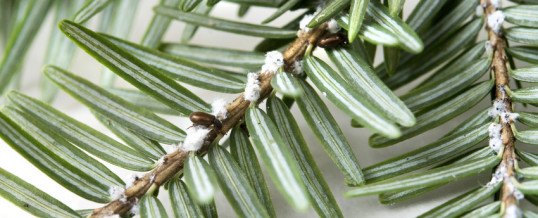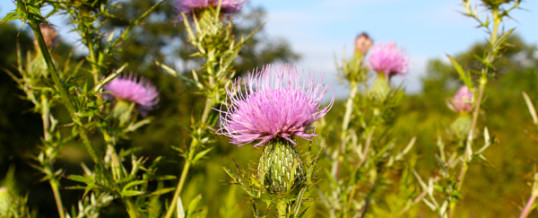BLACKSBURG, Va., Feb. 19, 2016 – A Virginia Tech invasive plant expert will be briefing congressional staff members on Monday on the best ways to increase the use of plants for biofuels without sowing an environmental nightmare in the process.
While plants used for biofuels are a vital part of a growing need to create more forms of alternative energy, careless planting of them can lead to an unwanted invasion of exotic plants that can push out native species and create ecological havoc.
“We hope to show our leaders in Washington how a series of simple procedures can maximize the benefit of the biofuel crops while mitigating their risks,” said Jacob Barney, an assistant professor in the College of Agriculture and Life Sciences’ Department of Plant Pathology, Physiology, and Weed Science.
Follow Barney on the college’s Twitter page as he chronicles his meetings with congressional staffers and travels through the inner-workings of the Washington, D.C. policy-making machine.
History has shown that crops that were meant to have a benefit can turn out to be a nuisance. Kudzu was introduced to curb erosion but now chokes out native plants in large swaths of the South.
Barney is the leader of an international group of scientists who have been working on the proposal as excitement and concern surrounds biofuels.
The excitement comes from farmers wanting to diversify their crops by planting biofuels, which can often be raised on marginal land with little inputs. But the fear arises if those crops could be deemed invasive, which is one of the top-five threats to biodiversity. Once an invasive plant takes root, it can be extremely difficult and costly to remove them.
Barney and his colleagues are proposing a multi-step risk-evaluation system to determine if crops pose an invasive risk. It examines if plants are considered “weeds,” if it requires quarantining, and what laws exist or are needed to minimize risk.
“We hope our time in Washington will help to move the biofuels market ahead in direction that helps the planet instead of harming it,” said Barney, who is also a member of the Fralin Life Science Institute.
Nationally ranked among the top research institutions of its kind, Virginia Tech’s College of Agriculture and Life Sciencesfocuses on the science and business of living systems through learning, discovery, and engagement. The college’s comprehensive curriculum gives more than 3,100 students in a dozen academic departments a balanced education that ranges from food and fiber production to economics to human health. Students learn from the world’s leading agricultural scientists, who bring the latest science and technology into the classroom.
Story by Zeke Barlow
Just finished at the Senate. Room a little nicer than my classrooms at VT! pic.twitter.com/b43KsfaIq6
— Jacob Barney (@jnbarney) February 22, 2016




